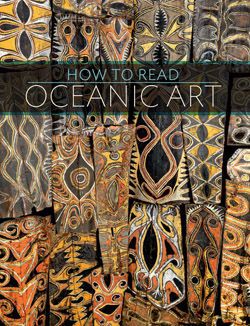Female figure (’otua fefine)
Whale ivory figurines, from the Ha’apai Islands of Tonga have a sculptural power that belies their modest scale. Almost exclusively female, the images are referred to as known as ’otua fefine, a term used to describe prominent female ancestors who were venerated as divine beings.
This striking example was carved from the creamy core of the polished tooth of a sperm whale. The figure’s honey-colored patina was achieved by smoking the figure over smoldering sugary tubers from the ti plant (Cordyline fruticose) and then rubbing with oil. Not only did this accentuate the ivory’s natural grain (giving it a rich reddish color which was an important element of its aesthetic), the resulting shimmer of the surface conveyed something of the essence of divine, sacred light. The creator of this remarkable carving worked the material to spectacular effect, choosing to align the grain of the whale ivory at the center of the figure so that fine concentric circles emanate out from the figure’s knees and navel and embellish the lower part of her face. Carefully worked incisions create a series of raised ridges which delineate facial details including her eyebrows, a pair of closed eyes and neatly executed nose. The small, partially closed mouth adds to the overall impression of calm serenity and repose.
The figure is robust with a strong physique and rounded breasts, the triangular head prominent and well-defined with a strong chin that juts out dramatically over her neck and shoulders. Her strong arms and flattened palms frame her body, containing the forces of vital energy within her. The gently flexing stance is typical of the carving style of the Ha’apai Islands, at the center of the Tongan archipelago. The natural contour of the original whale tooth can be determined by the angle of the figure’s compact body as she tips gently to the left. A small whale ivory peg in the left hand arm is an original repair from several centuries ago. Wrapped in barkcloth (smeared with yellow turmeric or red ochre), the figures were secreted away with other sacred objects in specially constructed fiber god houses which acted as small shrines. When activated with ritual chants in ceremony, they served as dynamic channels – a vessel (or vaka) through which the spirits of the ancestral gods could pass. Many, like this one, have a suspension hole in the back of the head or neck, which would allow for a suspension cord of plaited coconut fiber so that they could be worn on ceremonial occasions by chiefly women as prestige ornaments, either as single pendants or as an element of a larger necklace.
Ivory figures were venerated as sacred objects in the Ha’apai Islands as well as in Fiji, where this example was collected in 1868. There are sixteen of these single whale ivory female figures extant in the world. Their stylistic features show strong affinities with wood figures from Ha’apai, but differ greatly from known examples of Fijian sculpture, indicating that they were almost certainly created in the Ha’apai group and subsequently traded to Fiji. Polynesian islanders did not hunt whales but waited for chance strandings on the reef where they would follow appropriate protocols before going out to harvest and distribute the individual ivories collected. Whale teeth continue to be highly valued and prestigious items today.
Maia Nuku, 2020 Evelyn A. J. Hall and John A. Friede Associate Curator for Oceanic Art
Published
Kjellgren, Eric. Oceania: Art of the Pacific Islands in the Metropolitan Museum of Art, pp. 287-9, no. 172. New York: The Metropolitan Museum of Art, 2007
Kjellgren, Eric. How to Read Oceanic Art, pp. 146-9, no. 35. New York: The Metropolitan Museum of Art and New Haven: Yale University Press, 2014
Nuku, Maia. ATEA: Nature and Divinity in Polynesia. The Metropolitan Museum of Art Bulletin, Winter 2019, p. 12-3.
Exhibited
Newton, Douglas. The Nelson A. Rockefeller Collection: Masterpieces of Primitive Art. New York: Alfred A. Knopf, 1978.
Further Reading
Niech, Roger. ‘Tongan figures: from goddesses to missionary trophies to masterpieces’, The Journal of the Polynesian Society Vol. 116, No. 2 (JUNE 2007), pp. 213-268
#1719. Female Figure ('Outa Fefine)
This image cannot be enlarged, viewed at full screen, or downloaded.
This artwork is meant to be viewed from right to left. Scroll left to view more.
















